
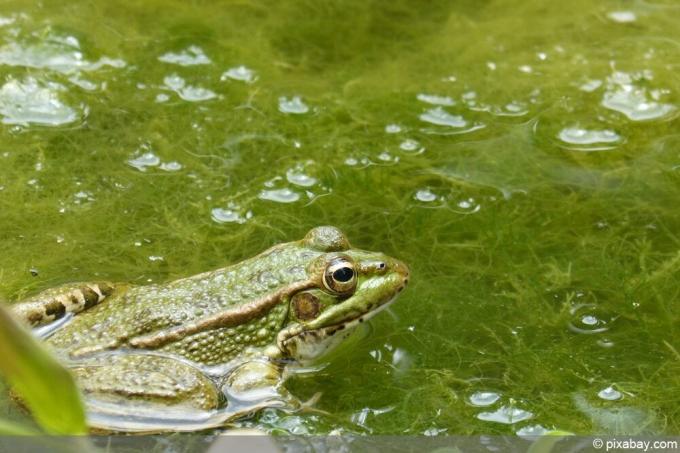
Table of contents
- causes
- solutions
- Fish out filamentous algae
- water change
- Fast growing aquatic plants
- reduce nutrients
- Preventing nutrient entry – prevention
- Conclusion
Filamentous algae belong to the group of green algae. The name says it all, they form long threads and also appear in good water quality, often when there is a high nutrient supply and strong solar radiation or cold. strong lighting in the aquarium. Filamentous algae grow in spring. They can mix with plants and significantly cloud the water. In the case of extreme proliferation, even fish in the pond or aquarium can die.
causes
Whether in the garden pond or in the aquarium, fish promote the growth of algae.
- Excess fish food decomposes in the water. The nutrients promote algae growth
- Fish excrement is also a good fertilizer. The more fish, the more nutrients
- Dead plant parts, both in the pond and in the aquarium
- In the pond there is also rain, which washes in fertilizer and soil
- Leaves can also fall into the pond, decomposing over time and releasing nutrients
- Pond soil also ensures an oversupply of nutrients
In principle, the same scenario takes place in the garden pond every year. In the spring, there is a short algal bloom caused by floating algae. This cannot be prevented and is also part of the self-cleaning of the pond. The mass proliferation of algae means that the available nutrients, mainly phosphates and nitrates, are used up. When the food is mostly gone, the floating algae die. The water becomes clear again.
solutions
If this does not work naturally, pumping the pond water through a suitable UV-C lamp is sufficient. As a result, floating algae clump together and are caught by the pond filter. The water is now clear, which not only has advantages. The sun can now penetrate to the bottom of the pond, causing the thread algae to begin to multiply. This is extremely quick. Filamentous algae settle everywhere and can become a real nuisance. Consistent fishing and the withdrawal of nutrients helps to get rid of them. This can be achieved in a number of ways.
Fish out filamentous algae
The easiest thing to do is to fish out the algae. This works pretty well with a broomstick. You simply drag it through the water, from left to right and vice versa. The long filamentous algae simply wrap around the stem and can be easily removed. The smaller ones can be fished out with a landing net or net. Algae is great for composting, so don't throw it away!
water change
Regular water changes can do wonders. However, about 30 percent of the water volume should be exchanged, which is a lot for large ponds. It is important that the water is changed at regular intervals. This is of course easier in the aquarium than in the garden pond, but it is important for both bodies of water. It is not clear whether rain or tap water is better suited. That's where scholars argue. Some say rainwater is too acidic, while others say tap water is too rich in nutrients, which encourages algae blooms. What is certain is that water is not just water. Depending on where you live and where the drinking water comes from, the quality can vary greatly. Well water usually contains too much phosphate. In any case, you should have the water quality tested.
Fast growing aquatic plants

Fast-growing aquatic plants consume a lot of nutrients. These are no longer available to the algae. Below I have put together some plants that grow quickly. Not all are hardy, so they must be removed from the pond and overwintered in the aquarium. Water lilies, which are so popular for ponds, are not among the crops that are important for the biological balance in the pond. They're just beautiful, but that's also a plus. Another advantage of aquatic plants is that they shade the water, especially floating plants and tall border plants that provide shade.
- horn leaf (hornwort)
- waterweed
- ground nettle
- crab claws
- Brazilian thousand leaf
- fir fronds
- Mexican oak leaf
- Small Duckweed
- water hyacinth
- floating rice
- Waterlily Clover Fern
- shell flower
- tuft fern
- European frog bite
- Floating Spurge
Tip:
The combination of fast-growing aquatic plants and water changes is ideal. This removes a lot of algae. Algae-eating fish and invertebrates take care of the rest.
reduce nutrients
Filamentous algae can be starved. You have to deprive them of nutrients. There are various ways to do this.
1. Shade the water surface, at least one third
- Above and below water plants
- sun sail
The plants not only provide shade, they also provide oxygen in the water. They also consume nutrients, mainly phosphate and nitrate. Water hyacinths are ideal for water purification.
2. phosphate bond
Algae growth stops when there is not enough phosphate. Unfortunately, very low values are enough for them. Well water often contains a lot of phosphate. It is therefore advisable to have well water tested. There are special phosphate binders to bind phosphate. These work for about two months, leaving little food for the algae. Quite a lot is needed. Success is achieved after about two weeks, because thread algae can survive that long without food. It is best to use the phosphate binder in the filter from autumn to spring. During this time, the pond plants do not grow and do not take up any food.

Tip:
There are different phosphate binders, not all are natural.
3. bacteria
Certain bacteria are able to convert the nutrients phosphate and nitrate, making them usable for other organisms. If the overall conditions are right, the algae can be starved with it. The bacterial mixture Ema lactic acid bacteria from the company Emiko was tested. A suitable cane molasses nutrient solution was also used.
The bacterial mixture is multiplied according to the instructions and is ready for use after 7 days. You can simply add the liquid to the water or the filter. The bacteria activate the biodegradation. Appropriate temperatures are decisive, they must be around 20°C, not too warm, not too cold. The nice thing is that the bacteria are completely harmless to humans, animals and plants. It is important that there is sufficient oxygen, because the bacteria use up a lot of it when they work.
4. seaweed powder
There are also differences in the algae powders. A natural remedy is B. that based on salicylic acid. The remedy must be used about twice a month. It removes the nutrients from the water. Overdose is not harmful.
Do not use algae powder with copper sulphate. This can cause great damage in the water in the long term, even if the packaging says: "...harmless to animals and plants".
5. Regular pond care
Pond care includes, for example, quickly fishing off the leaves that land on the water surface in autumn so that they cannot sink to the bottom. There it decomposes and a lot of nutrients are released, which are then available to the algae in the spring. It is best to stretch a net over the pond, which prevents the leaves from getting in.
In addition, dead plant remains of the pond plants must be removed regularly. This affects the plants in and around the pond. Even dead animals provide plenty of nutrients, so remove them as soon as possible.
Preventing nutrient entry – prevention
Prevention is better than cure. Not so many nutrients should get into the pond in the first place. This cannot be completely avoided, but in the crowd the measures make a big difference.
- Pay attention to the position of the pond when planning. There should be no deciduous trees or bushes in the immediate vicinity, even if they provide good shade. Instead, choose evergreen trees or shade them artificially, e.g. B. with sun sail
- Lay out the pond in such a way that rain cannot wash soil into the pond
- Do not use any soil in the pond, preferably also no pond soil. Simply place plants between stones, pebbles or similar.
- Many floating plants also shade the pond well and grow without any substrate, they only float on the water surface
- Nevertheless, plant a lot of plants for the water's edge, they improve the water quality immensely, are food competitors of algae
- Remove dead plants regularly
- Without fish, the biological balance is much easier to maintain
- If there are fish in the pond, then only a few
- Fish off foliage regularly. It must not sink to the bottom where it will rot and release nutrients. It is best to cover the pond with a net in autumn.
- Skim off dead algae, as they decompose, a lot of nutrients are created again
- Install pond filter
Conclusion
Algae are natural. An algae-free pond or an algae-free aquarium, on the other hand, are not natural. It is important to find the golden mean. Probably nobody has anything against a certain number of filamentous algae, they just shouldn't multiply en masse. Although it is easier to pour some kind of product into the pond than to laboriously fish out algae and change the water frequently, you can use the pond or pond more naturally. not keep the aquarium clean.
The basic prerequisite for finding out why too many algae populate the water is a precise water analysis. This must be carried out in a suitable laboratory. There you often get tips on what needs to be improved and how it can be achieved.
Anyone who intervenes strongly in the cycle of nature should not be surprised if the natural balance is upset. Unfortunately, many anti-algae products that are labeled as fish- and plant-friendly are not. Many users have already had to go through this painful experience, others will do so. Providing clean water naturally is safer, albeit more labor intensive. Lots of plants in the water, little fish stock, not much feeding, fishing off algae and changing the water, that's all that is necessary in most cases.
 garden editorial
garden editorial I write about everything that interests me in my garden.
Learn more about algae in the pond
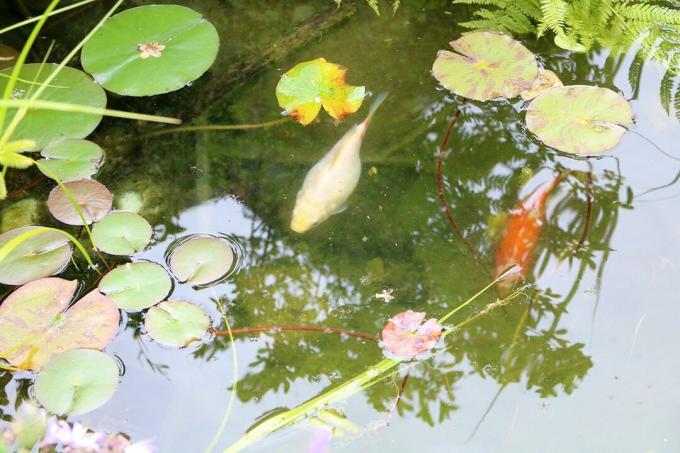
Floating algae in the pond: 10 tips for removing them
Algae infestation is not only unsightly to look at, but can also pose a threat to aquatic animals and plants. For this reason, it is advisable to always remove floating algae - read here how this works best!
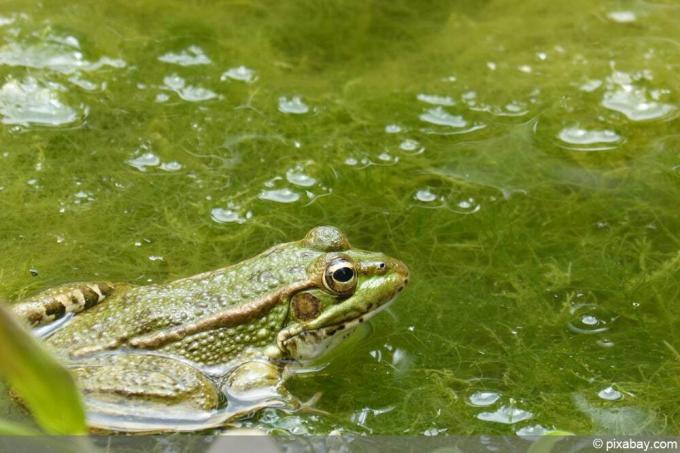
Algae eater in the pond: 5 hungry pond fish
Algae growth in the garden pond not only looks unsightly, but excessive growth can tip the entire ecosystem over. In this article we will tell you which types of fish, snails and mussels like to eat algae and what else helps against the "green plague".
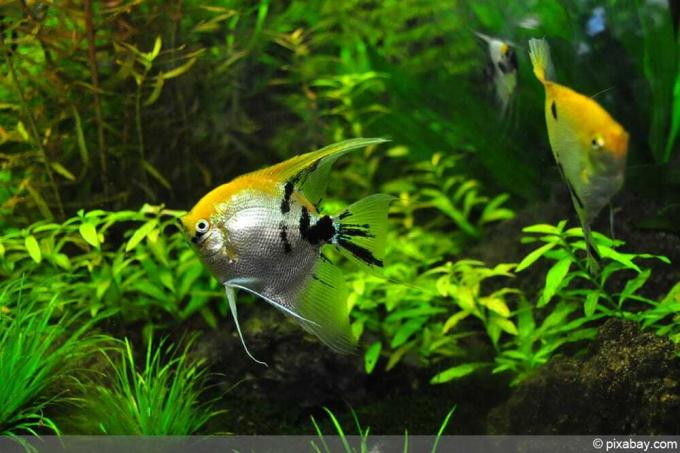
Combat thread algae in the aquarium
The right countermeasures must be taken at an early stage to ensure that the thread algae in the aquarium do not grow too rampant and become a nuisance. Otherwise, the aquatic plants can severely disturb the sensitive ecosystem of the aquarium and also negatively affect the visual appearance.
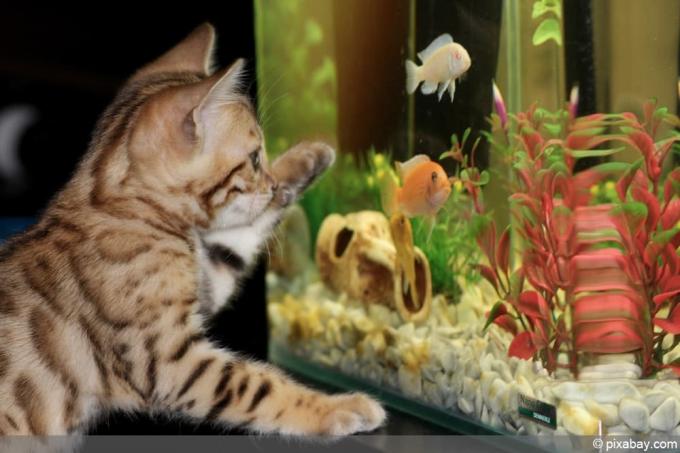
Get rid of green algae in the aquarium properly
Green algae occur in every aquarium. This is normal and part of it. It can even speak for a particularly good water quality. Only a massive increase in algae caused by too much light and too many nutrients is not normal. The green coloring and turbidity of the water means nothing other than that the biological balance has gotten out of joint. There are different green algae, also with quite different requirements. However, all benefit from an excess of food and can best be combated by depriving them of food.

The best home remedies for algae in the aquarium
Algae in the aquarium are absolutely natural and normally do not have to be fought. It only becomes difficult when they multiply explosively. There is a reason for this increase. It has to be found and turned off. That sounds simple, but it isn't.

Combat diatoms in the aquarium - in 5 steps
Diatoms occur mainly in newly set up freshwater and seawater aquariums, but can also appear during normal aquarium operation. This is mainly due to the initially high concentration of silicates.
